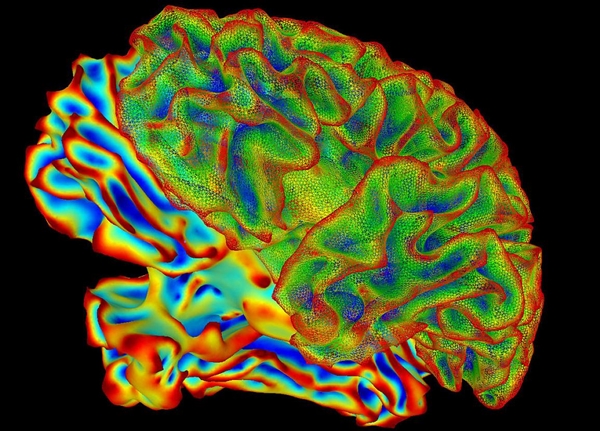14 Oct. 2021. A developer of implanted devices to record signals from brain cells received funding to advance a smaller and more durable electrode array. National Institute of Mental Health or NIMH, part of National Institutes of Health, awarded a three-year, $3.2 million grant to Paradromics Inc. in Austin, Texas to build the device.
Paradromics creates devices that connect the human brain to computer systems, enabling high-volume transfers of data between neurons in the brain and computers for diagnosing and treating brain disorders. The company says its current technology now supports more than 65,500 electrode channels sampled simultaneously. As reported by Science & Enterprise in July 2020, a team led by Paradromics founder and CEO Matt Angle demonstrated a device with high-density arrays of microwires made of platinum and irridium that sense, connect, and transfer data to and from complementary metal–oxide semiconductor, or CMOS amplifier circuits.
The researchers tested the device with lab animals, implanting the electrode array in the cerebral cortex, the outer layer of the brain that governs a person’s motor and sensory activity, and conscious thought. Angle and colleagues published their findings in February 2021 in Journal of Neural Engineering (paid subscription required). In an earlier NIMH-funded project, Paradromics built and demonstrated its microwire-to-CMOS architecture with devices of 1,200 electrodes implanted in lab rats, and more than 30,000 electrodes implanted in sheep.
Feasibility of human surgical implants
The new project, a second phase of the first award, aims to develop a more compact and efficient device with fewer electrodes for testing in sheep and humans. Paradromics proposes fabricating a sensor array with 400 to 1,600 electrodes, no more than 400 micrometers deep and one millimeter long. The company plans to test the new device for feasible implantation in humans already undergoing brain surgery, and to determine any initial reactions to the implants. Paradromics is partnering with Massachusetts General Hospital for the clinical phases of the study, working with neuroscientists Sydney Cash and Leigh Hochberg.
The company also proposes testing the device implanted in live sheep for up to six months. Those tests will look for scarring of glia cells or loss of neurons in the animals’ brains at several points during that period.
Paradromics says the new NIMH award is a major step in development of a brain-computer interface or BCI, leading to clinical trials testing the device as a way to to restore communication for patients who have lost the ability to speak due to severe paralysis. “Our mission,” says Angle in a Paradromics statement released through Cision, “is to is create a new industry where brain-computer interfaces transform unmet medical needs into solvable technical problems. This new award, together with our recent venture round, not only means that we have the resources to execute on this vision, but that others are seeing the same bright future for BCI.”
The award is a Small Business Innovation Research or SBIR grant made under NIH’s small business programs that set aside a part of the agency’s research funding for U.S.-based and owned companies. SBIR grants fund work by research companies in the U.S., and in most cases are made in two parts: a first phase to determine technical and commercial feasibility, and a second phase to develop and test a working prototype or prepare for clinical trials. This grant is a phase 2 award that runs through August 2024.
More from Science & Enterprise:
- Small Biz Grant to ID Digital Biomarkers for Alzheimer’s
- Lab Demonstrates 3-D Printed Tissue, Blood Vessel Implant
- Infographic – Digital Therapeutics Funding on the Rise
- Digital Biofeedback Device Shown to Reduce PTSD
- Biotechs Partner on Agitation Detection Technology
* * *


 RSS - Posts
RSS - Posts
[…] NIH Funds Brain-Computer Implant Device […]